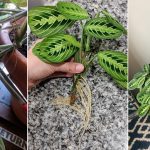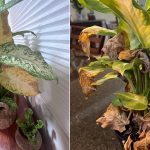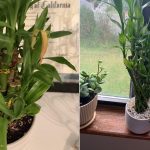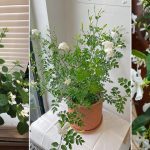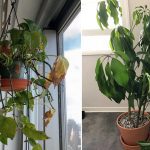Follow this extensive Teddy Bear Vine Care Guide to learn everything about growing this trailing succulent indoors!

Native to the southern states of India, the Teddy Bear Vine is widely loved for its soft texture, easy care requirements, and attractive trailing foliage that will add a whimsical touch to your home without much ado! Here’s everything you must know to grow this trailing succulent indoors!
- Botanical Name: Cyanotis kewensis
- A trailing succulent with soft, fuzzy leaves
- Spans to a length of 1-2 feet
- Thrives in a temperature range of 60-80 F or 16-27 C
- Loves bright, indirect sunlight
Teddy Bear Vine Plant Profile
A member of the Commelinaceae family, the Cyanotis kewensis is a succulent prized for its unique appearance. The leaves are small, round, and covered with fine hairs, which give them a soft, velvety texture, giving the plant its common name—Teddy Bear Vine. The teardrop-shaped foliage is typically a bright green color variegated with intricate patterns of white and silver stripes.
Spanning about 1-2 feet, the vines look beautiful cascading down hanging baskets and are an excellent choice for container gardens.
Ideal Pot Size
When it comes to choosing the ideal pot size for your Teddy Bear Vine, you should consider the size of the plant and its root system. Typically, this plant is small in size and does not require a large pot. A pot that is 4-6 inches in diameter is ideal for a young plant, while a mature plant may require a pot that is 8-10 inches in diameter.
Remember to repot your Cyanotis kewensis every 1-2 years or when you notice the roots coming out of the drainage holes. Repotting will give the plant more room to grow and thrive.
Teddy Bear Vine Propagation

Teddy Bear Vine can easily be propagated through stem-cutting and root division methods:
Propagation via Stem Cuttings
- Get a healthy, diseases free plant and select a robust stem with a few leaves.
- Cut the stem just below a node using a sharp, clean knife or scissors.
- Remove the lower leaves from the cutting, leaving just a few at the top.
- Dip the cut end of the stem into the rooting hormone, shaking off the excess.
- Fill a pot with a well-draining potting mix and plant the cutting into it.
- Water the cutting and place it in a bright but indirect light. Make sure the medium is moist but not soaking wet.
You’ll notice new growth in a couple of weeks.
Propagation via Root Division
- Carefully remove the plant from its pot.
- Gently detangle the roots and divide them into smaller sections.
- Ensure that each section has at least a few stems and a healthy root system.
- Plant each section in separate pots using a well-draining potting mix.
- Water the new plants and place them in bright but indirect light.
Keep the soil moist but not waterlogged. In a few weeks, the new plants should start to grow.
Requirements for Growing Teddy Bear Vine
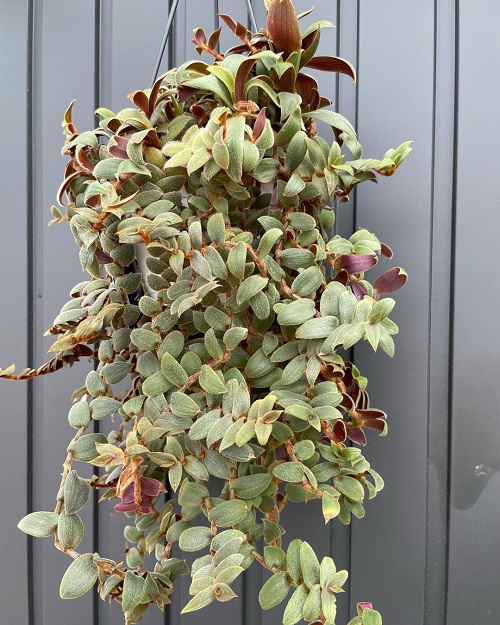
Light
Cyanotis kewensis thrives in bright, filtered light. While the plant can tolerate some direct sunlight, excessive exposure can cause leaf scorching and stunted growth. It is essential to provide a consistent light source, such as an east or west-facing window, to encourage even growth and maintain the plant’s dense foliage.
If natural light is insufficient, supplemental artificial lighting, like LED grow lights, can be used to create an optimal environment for your indoor Teddy Bear Vine.
Soil
Teddy Bear Vine requires a well-draining soil mix to prevent root rot and promote healthy growth. A suitable mixture consists of equal parts high-quality potting mix, peat moss, and perlite or coarse sand. You can add a fistful of organic matter, such as compost or well-rotted manure, to provide essential nutrients and improve the overall soil structure.
Using contaminated or clayey medium is a big NO as that will suffocate the roots, thus killing the plant.
Water
Indoor Teddy Bear Vine prefers evenly moist soil but is sensitive to overwatering. The frequency can vary depending on the ambient temperature, humidity, and light conditions. To maintain the right balance, follow a weekly deep-watering session, i.e., saturate the medium until water seeps out of the drainage holes. Allow the top inch of the medium to dry out before repeating the same.
Refrain from over-watering at all costs to ensure proper growth of the plant.
Temperature & Humidity
This trailing succulent thrives in average indoor temperatures, ideally between 60-80 F or 16-27 C. It can tolerate short periods of cooler temperatures, but prolonged exposure to temperatures below 50°F (10°C) may lead to slowed growth, leaf drop, and potential damage.
Avoid placing your Teddy Bear Vine near cold drafts, air conditioning vents, or heat sources, as sudden temperature fluctuations can stress the plant.
The plant appreciates moderate humidity levels, typically between 40-60%. Use a humidifier, group your plants together, or place the pot on a tray filled with pebbles and water to maintain optimal humidity levels. Misting the plant occasionally with tepid water also helps.
Teddy Bear Vine Care
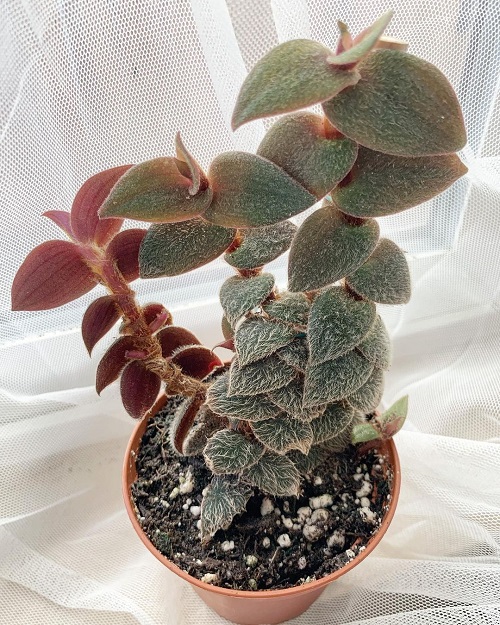
Fertilizer
Feed your Teddy Bear Vine with a balanced liquid fertilizer diluted to half-strength during the active growing season in spring and summer. Apply the fertilizer every 4-6 weeks to provide essential nutrients and promote healthy growth.
Refrain from over-fertilizing, as this can lead to excessive growth, weak stems, and potential root burn. During the fall and winter months, when the plant’s growth slows down, hold back on fertilizing to prevent nutrient buildup and potential damage to your Teddy Bear Vine.
Pests and Diseases
The most common pests that affect the plant include aphids, mealybugs, scales, and spider mites. Use a combination of methods, including manual removal using cotton pads and rubbing alcohol, insecticidal soaps, and neem oil spray. Always isolate the affected plant from other houseplants to prevent the spread of pests.
Diseases that may affect Teddy Bear Vine include root rot, which results from overwatering and poor drainage, and fungal issues due to excessive moisture on the leaves. Ensure proper ventilation, and avoid wetting the foliage to prevent most issues.

